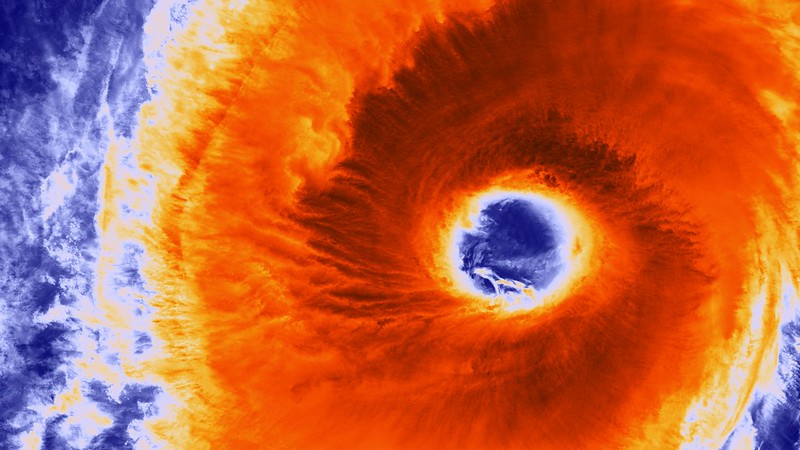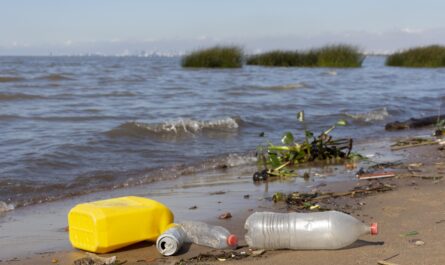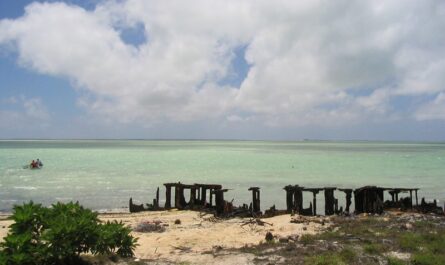Typhoons are among the most powerful and destructive natural phenomena, significantly impacting the Pacific region. These tropical storms, with their torrential rains, fierce winds, and towering waves, frequently strike island nations, leaving behind a trail of devastation. Beyond the immediate destruction, typhoons also have long-term implications for economies, ecosystems, and communities. This article explores the various ways typhoons affect Pacific island nations, focusing on their physical, environmental, social, and economic impacts, as well as the measures being taken to mitigate their devastating effects.
1. Physical Destruction: The Immediate Impact of Typhoons
Intense Winds and Storm Surges
Typhoons bring winds exceeding 150 mph (241 km/h), causing extensive damage to infrastructure, homes, and vegetation. For low-lying island nations like Tuvalu and Kiribati, storm surges—abnormally high waves driven by the typhoon’s winds—pose the most significant threat.
- Coastal Erosion: Entire sections of land can be washed away, reducing habitable and agricultural space.
- Flooding: Prolonged rainfall leads to severe flooding, contaminating freshwater sources and submerging infrastructure.
- Infrastructure Damage: Ports, roads, and buildings often face catastrophic damage, paralyzing essential services.
Examples of Destruction
- Typhoon Haiyan (2013): One of the most powerful typhoons ever recorded, Haiyan devastated the Philippines, causing over 6,000 fatalities and displacing millions.
- Cyclone Pam (2015): This storm caused widespread destruction in Vanuatu, with over 90% of homes on some islands damaged or destroyed.
2. Environmental Impacts: Disruption of Ecosystems
Marine Ecosystems
Typhoons dramatically alter marine environments, affecting both coastal and deep-sea ecosystems.
- Coral Reefs: Strong waves and storm surges damage coral structures, reducing biodiversity and impacting species dependent on reefs for shelter.
- Seagrass Beds: These critical habitats for marine life are often uprooted, disrupting local food chains.
Terrestrial Ecosystems
- Deforestation: High winds uproot trees and strip vegetation, leading to soil erosion and habitat loss.
- Wildlife Displacement: Native species are forced to migrate, increasing competition for limited resources in unaffected areas.
Impact on Water Resources
Saltwater intrusion from storm surges contaminates freshwater aquifers, making drinking water scarce. This problem is particularly severe for atolls and smaller islands that rely on rainwater or shallow aquifers.
3. Social Impacts: Displacement and Health Challenges
Forced Migration
Typhoons often force large populations to evacuate, leading to temporary or permanent displacement.
- Loss of Homes: In nations like Fiji and the Marshall Islands, thousands are left homeless after major storms.
- Cultural Disruption: Many Pacific islanders have deep spiritual and cultural ties to their land, making displacement especially traumatic.
Health Challenges
Typhoons exacerbate public health issues through:
- Waterborne Diseases: Flooding increases the risk of diseases like cholera and dengue fever.
- Mental Health Strain: Survivors often face long-term psychological effects, including PTSD, due to the loss of loved ones and livelihoods.
- Malnutrition: Damaged agricultural lands and disrupted supply chains lead to food shortages.
4. Economic Impacts: Cost of Recovery and Lost Livelihoods
Cost of Reconstruction
The economic toll of typhoons is staggering, particularly for small island nations with limited resources.
- Infrastructure Repair: Rebuilding roads, ports, and public buildings often takes years and significant financial investment.
- Foreign Aid Dependency: Many nations rely heavily on international assistance, which can delay recovery efforts.
Impact on Livelihoods
- Fisheries: Typhoons disrupt fishing activities, damaging boats and marine ecosystems that sustain local economies.
- Agriculture: Crops like taro, coconuts, and bananas are often destroyed, leading to food insecurity and economic losses.
Tourism
Island nations dependent on tourism suffer long-term economic impacts as typhoons deter visitors and damage resorts, beaches, and coral reefs.
5. Climate Change and Increasing Typhoon Intensity
The Link Between Climate Change and Typhoons
Climate change is intensifying typhoons, making them more frequent and severe.
- Rising Sea Surface Temperatures: Warmer oceans provide the energy needed for typhoons to grow in intensity.
- Sea Level Rise: Amplifies the impact of storm surges, causing more extensive flooding.
Case Studies
- Typhoon Goni (2020): This Category 5 storm struck the Philippines, setting records for its intensity and highlighting the growing threat of climate change-driven typhoons.
- Cyclone Harold (2020): This storm wreaked havoc across the Solomon Islands, Fiji, and Tonga, underscoring the vulnerability of Pacific nations to stronger cyclones.
6. Mitigation and Adaptation Strategies
Community-Based Adaptation
Empowering local communities to prepare for and recover from typhoons is essential.
- Early Warning Systems: Improved forecasting allows communities to evacuate and prepare in advance.
- Resilient Infrastructure: Building typhoon-resistant homes and public facilities reduces the damage caused by future storms.
Regional Collaboration
Pacific nations are working together to address shared challenges through:
- The Pacific Resilience Partnership: Focused on enhancing disaster preparedness and response.
- Climate Financing: Accessing funds from global initiatives like the Green Climate Fund to support adaptation efforts.
Mangrove Restoration
Mangroves act as natural barriers against storm surges, reducing coastal erosion and protecting inland areas. Many Pacific nations, including Fiji and Samoa, are investing in mangrove reforestation projects.
7. Cultural and Psychological Resilience
Preserving Traditions
Typhoons not only disrupt daily life but also threaten cultural heritage. Efforts to preserve traditional knowledge and practices, such as constructing storm-resistant homes using local materials, are gaining importance.
Mental Health Support
Addressing the psychological toll of typhoons is crucial for long-term recovery. Community-based counseling and support programs are helping survivors cope with trauma.
Conclusion
Typhoons are a formidable challenge for Pacific island nations, impacting every aspect of life from ecosystems to economies. As climate change continues to intensify these storms, the resilience of Pacific communities will be tested like never before. However, through innovative adaptation strategies, regional collaboration, and a commitment to cultural preservation, these nations are finding ways to protect their people and environment. By learning from their experiences, the global community can better understand the importance of sustainable practices and disaster preparedness in a changing world.



